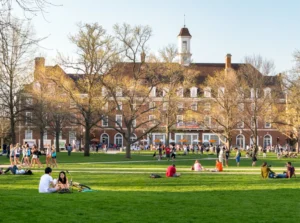Demographic Shifts and Multifamily Real Estate: A Look into the Future
Recent increases and inflation and the leftover effects of COVID have left many wondering what the real estate market has in store, but there are many reasons to remain optimistic about the future of multifamily real estate investing. From shifts in attitudes toward home ownership to the rapid urbanization of smaller communities, multifamily real estate properties are more relevant than ever. Let’s take a closer look at just what the future has in store for investors.
Urbanization and Emerging Markets
Rapid urbanization in smaller cities has created a host of emerging markets throughout the country, notably in cities throughout Texas, Florida, North Carolina, and other states throughout the South. While increases in population lead to an increased demand for housing, the urbanization of these areas has led to interesting housing preferences. There is a growing demand for denser housing options, with communities planned around walkability and easy access to neighborhood amenities. This means a need for multifamily real estate properties in emerging rental markets, not just a demand for single-family homes, in an increasing number of cities across the country.
Preferences of Millennials and Gen Z
 While there is some debate over whether Millennials and Gen Z have been priced out of the option of home ownership or they simply prefer not to own property, the choices these two younger generations are making have serious impacts on the real estate market. An estimated 21% of Gen Zers surveyed were not able to come up with the down payment to purchase a home, and 25% of Millennial renters reported they’ve given up on the possibility of owning a home.
While there is some debate over whether Millennials and Gen Z have been priced out of the option of home ownership or they simply prefer not to own property, the choices these two younger generations are making have serious impacts on the real estate market. An estimated 21% of Gen Zers surveyed were not able to come up with the down payment to purchase a home, and 25% of Millennial renters reported they’ve given up on the possibility of owning a home.
With two generations of Americans preferring or needing to rent in 2023 and beyond, the demand for affordable rental properties remains dependable, creating a positive outlook for the multifamily real estate market. However, developers must meet their needs and preferences. Younger generations want homes that integrate technology with traditional amenities, such as smart locks and thermostats. High-speed internet and access to gym/fitness centers also rank high on the list of must-haves for young renters. Real estate investors will want to look at these trends when making decisions on where to invest and how to improve properties.
Sustainable Development
Sustainability is important to younger generations of renters too, and developers are integrating eco-friendly principles into new construction projects. Sustainable development can help boost local real estate markets and appeal to Millennials and Gen Z, as well as other generations of renters. Energy-efficient lighting and appliances are easy to incorporate into both new and existing developments, and new multifamily projects can incorporate ethically sourced green building materials, such as reclaimed lumber, to help reduce waste and construction costs.
There are many benefits for investors to seek out sustainable options for new developments and capital improvements on existing buildings, including tax incentives for installing EV charging stations and rooftop solar systems. Adding these green amenities can attract new tenants at higher rents to improve cash flow potential.
Hedging Against Inflation and Market Volatility
Investing in multifamily real estate offers a unique hedge against inflation and market volatility, particularly in today’s complex financial market. While the single-family housing market has been hit by high inflation and even higher interest rates, the impact on multifamily housing is markedly different. People may not be able to afford single-family homes in 2023, and current homeowners may be hesitant to sell when interest rates are high, which means renters may need to continue renting for longer. The demand for rental housing has not dropped significantly, providing a unique opportunity for investors.
Similarly, real estate can also provide a hedge against market volatility going forward. While stock markets respond quickly to global politics, breaking financial news, and other world events, the real estate market can’t respond as quickly. This means real estate doesn’t see the volatile highs and lows that stocks often experience. Investors looking to diversify their portfolios in 2023 may want to consider real estate as a way to protect against potentially unstable stock markets.
New markets popping up across the country combined with younger generations of renters wanting affordable, sustainable housing options they can depend on provides a promising outlook for multifamily real estate in 2023 and the coming years. Investing in real estate can help you create a diverse portfolio and hedge against inflation and market volatility.
Source: DiversyFund
Need a Lease Agreement?
Access 150+ state-specific legal landlord forms, including a lease.













 Accessibility
Accessibility